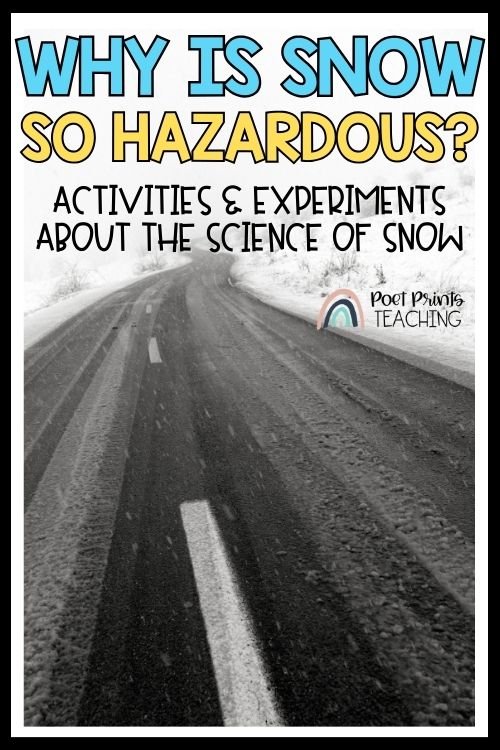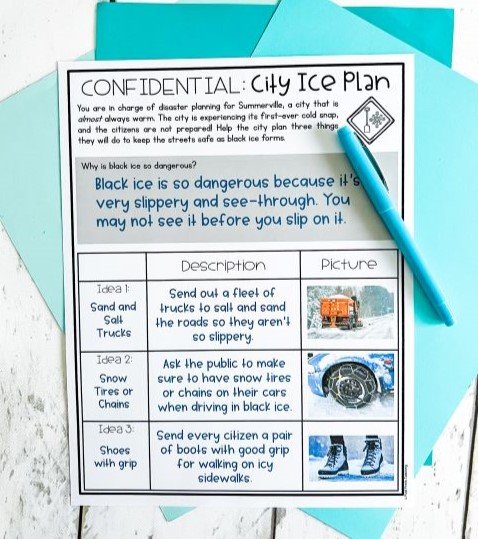Robert Frost once said, “You can’t get too much winter in the winter”. So why not go all out and do some fun winter-themed science lessons? Winter is a great time to teach topics like snow, ice, insulators, thermal energy, and extreme weather. There are some simple and engaging winter science activities that third-grade students will love!
explore SNOW AND its HAZARDS
To be sure, not everyone experiences snow in winter, but for many people, winter and snow go hand-in-hand. For some people, blizzards are a regular occurrence during the winter.
To teach about snow and its hazards, there are plenty of great activities. Some of them include reading age-appropriate materials about the topic, doing snowflake art, and creating a plan to prepare for a blizzard. Another fun snow activity is to design a device that will launch a snowball (cotton ball) across the classroom.
For more details on these snow activities, click HERE.
learn about ICE AND its HAZARDS
Ice is another phenomenon that many people experience during the winter. There are some fun ways to teach about ice.
Read about ice and its hazards, then create a city safety plan. Experiment with melting points to see which substances will melt ice the fastest. Complete a STEM challenge using matchbook cars, sandpaper, and ice to teach how slippery ice is. Don’t forget to incorporate art by creating colored ice cubes so students can paint with them.
For more ideas and details about these activities, check out this blog about ice and its hazards.
what are insulators?
Whether it’s watching a YouTube video, reading nonfiction passages, or doing a STEM challenge, there are plenty of ways to engage students while learning about insulators.
Plus, students can study polar bears and learn how insulators help these arctic animals. Be sure to conduct the experiment where students pretend to be a polar bear by covering their finger or hand with some lard and plunging it into ice water.
Check out this blog for more details and science lessons about insulators.
thermal energy in the winter
For a deeper look at insulation, radiation, and conduction check out this blog all about thermal energy.
Drink a cup of tea or hot cocoa with your students and talk about how the heat transfers from the mug into their cool hands (conduction). Sit around a space heater to get warm (radiation). Make ice and have students melt it in their bare hands so they can experience heat transfer.
There are many fun and budget-friendly options for teaching thermal energy.
wintertime extreme weather
For many places around the world, winter brings extreme weather. This could take the form of extreme wind, rain, snow, or hail. There are plenty of activities for teaching extreme weather.
Research extreme weather and how people prepare for it. Have students construct a weather-resistant bridge in a Tupperware container and test it to see if it will withstand water being poured around it.
Challenge students to design a weather-resistant shelter that you will “attack” with your hairdryer to simulate extreme wind.
For more details and ideas click HERE and read about Extreme Weather activities for 3rd grade.
These topics feel natural to teach in the winter since students will likely be seeing these phenomena happening around them. Winter science activities are fun! Enjoy!



















